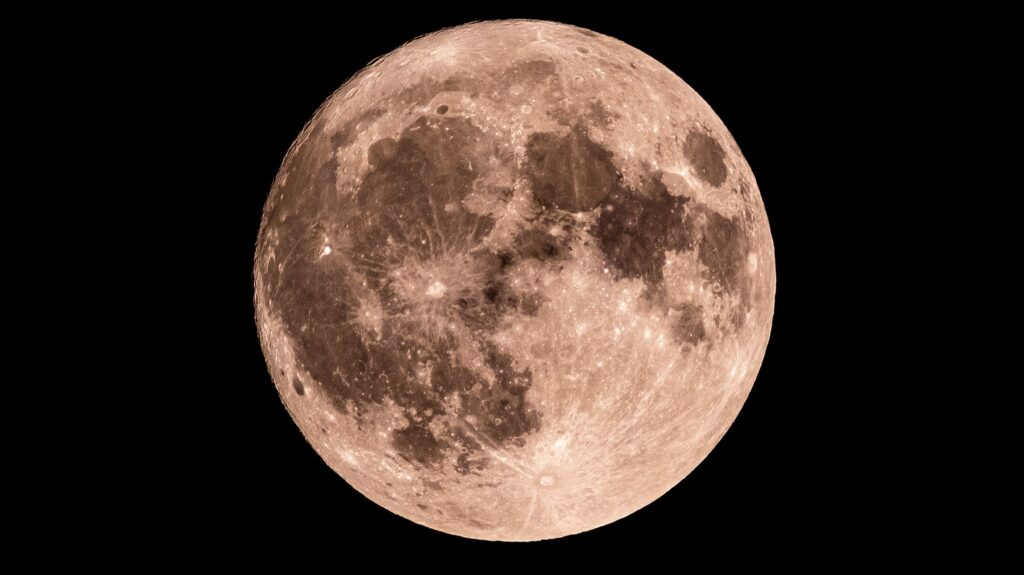Ever wonder why the moon looks different every night? The answer lies in the fascinating phenomenon known as the lunar cycle. This cycle, a recurring series of eight distinct phases, dictates the moon’s visibility from Earth. According to NASA, the entire cycle spans approximately 29.5 days, with each phase occurring as the Sun illuminates different parts of the moon during its orbit around Earth.
Tonight, July 6, 2025, the moon is in the Waxing Gibbous phase. As reported by NASA’s Daily Moon Observation, a substantial 83% of the moon will be illuminated and visible from Earth. This marks the 11th day of the lunar cycle, positioning us just one phase away from the Full Moon.
What Can We See Tonight?
With the naked eye, observers can enjoy a spectacular view of several lunar features, including the Mare Vaporum, Mare Imbrium, and Mare Crisium. For those equipped with binoculars, additional sights such as the Alps Mountains, Archimedes Crater, and Alphonsus Crater will be visible. A telescope will further enhance the experience, revealing features like the Rima Ariadaeus and the landing sites of Apollo 14 and Apollo 16.
The Lunar Cycle: An Overview
The lunar cycle is a result of the moon’s 29.5-day orbit around Earth, which alters the angles between the Sun, Moon, and Earth. This cycle affects how the moon appears from our vantage point on Earth. Although we always see the same side of the moon, the portion illuminated by the Sun changes, giving rise to the various phases.
The Eight Phases of the Moon
- New Moon: The moon is positioned between Earth and the Sun, rendering it invisible to us.
- Waxing Crescent: A sliver of light begins to appear on the moon’s right side (in the Northern Hemisphere).
- First Quarter: Half of the moon is illuminated on the right side, resembling a half-moon.
- Waxing Gibbous: More than half of the moon is lit, but it has not yet reached full illumination.
- Full Moon: The moon’s face is fully illuminated and visible.
- Waning Gibbous: The illuminated portion begins to decrease on the right side.
- Last Quarter (or Third Quarter): Another half-moon appears, with the left side illuminated.
- Waning Crescent: A thin sliver of light remains on the left side before the moon goes dark again.
Looking Ahead: The Next Full Moon
The next full moon is scheduled to occur on July 10, 2025. This follows the previous full moon, which took place on June 11. Each phase of the moon offers unique opportunities for observation and appreciation, making it a captivating subject for both amateur and professional astronomers alike.
Implications and Observations
The lunar cycle not only provides a celestial spectacle but also has practical implications. Historically, moon phases have been used to guide agricultural practices, religious rituals, and cultural events. Understanding the cycle enhances our appreciation of the night sky and its influence on life on Earth.
As we continue to explore and study our celestial neighbor, the moon remains a source of wonder and inspiration. The Waxing Gibbous phase on July 6 offers a chance to connect with the cosmos and reflect on the natural rhythms that govern our world.
 Mysterious Skull Formation on Canadian Coast Sparks Alien Theories
Mysterious Skull Formation on Canadian Coast Sparks Alien Theories Why Satellites Use ‘Gold Foil’ for Thermal Protection in Space
Why Satellites Use ‘Gold Foil’ for Thermal Protection in Space World’s First Anti-Sickness Car Promises a Smoother Ride for Motion-Sensitive Drivers
World’s First Anti-Sickness Car Promises a Smoother Ride for Motion-Sensitive Drivers World’s First Anti-Sickness Car Promises a Smoother Ride for Motion-Sick Passengers
World’s First Anti-Sickness Car Promises a Smoother Ride for Motion-Sick Passengers Yulia Putintseva Requests Spectator Removal at Wimbledon Over Safety Concerns
Yulia Putintseva Requests Spectator Removal at Wimbledon Over Safety Concerns